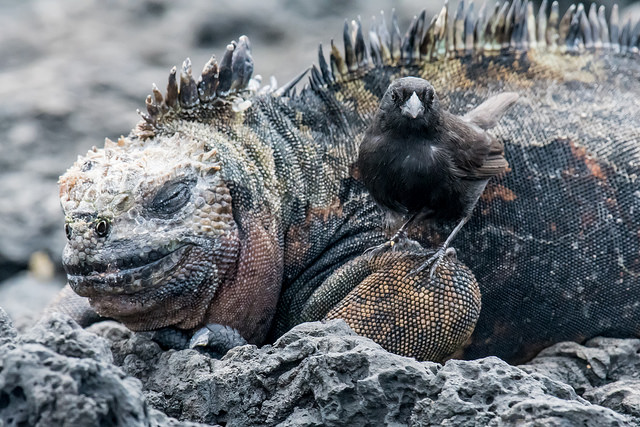
It can be hard to grasp the fundamental concepts of evolution because of the vast timeframes involved. But there are dedicated scientists who, after years of study in the Galapagos Islands, have actually observed evolution in action through the emergence of new species of finches. On the battlefield, evolution occurs even faster and we don’t even have to travel to the Galapagos to see it. There was plenty of evidence of evolution in action at Land Forces 2018 last week in Adelaide, both on the floor of the industry expo and in the Australian Army’s presentations.
Evolution both in the natural world and in the army are driven by adaption to a constantly changing environment. Of course, evolution in nature occurs through natural selection of randomly generated variations, while the army’s evolution is the result of conscious development and testing of new concepts and capabilities—that is, innovation.
As Chief of Army, Lieutenant General Rick Burr continues the cerebral legacy of Angus Campbell, and there are many encouraging signs that the army is creating the intellectual ecosystem it needs to think through how it responds to a changing world. Adelaide was full of examples of innovation and creative thinking.
It would be hard for even the most cynical not to be impressed by the Aussie innovations that were on show, such as the integration of a phased-array radar designed and built by Canberra’s own CEA Technologies onto Bendigo’s Hawkei protected vehicle as part of the Department of Defence’s short-range air defence project. It’s encouraging to see the enthusiasm with which the army is embracing uninhabited systems, or drawing on its entire workforce to get ideas about how to meet the challenges of the future.
But the army, like its sister services and Defence as a whole, is facing fundamental challenges. Just as in the natural world, evolution on the battlefield drives greater complexity. There are more and more species. And each species is itself becoming more complex. The army developed the Bushmaster protected vehicle, a creature that it never had before, to meet a particular niche. And because there is a specialised niche that is better met by a smaller vehicle, it now has Hawkei, a smaller protected vehicle.
In order to adapt to the changing environment, the Bushmaster is itself evolving and becoming more complex—for example, with the addition of counter–improvised explosive device systems, remote weapons systems and battle management systems. Subspecies of the Bushmaster, such as an electronic warfare variant, are also evolving.
With the proliferation of unmanned aerial systems, it was inevitable that there would be a large number of counter-UAS technologies in Adelaide, both sensors and ‘shooters’ (noting that many of the shooters don’t use old-fashioned kinetic energy). So it wasn’t surprising to see the launch of a prototype integrating a counter-UAS system into a Bushmaster.
Innovation and adaption are signs of a healthy army. But evolution into increasingly specialised niches also means that the army is getting stretched wider and wider as it acquires more and more capabilities, each of which is increasingly complex. While the Bushmaster (and then Hawkei) were developed to fill a niche between trucks and armoured fighting vehicles, the army still has trucks (in many variants, with scores of different trailers and modules to adapt the trucks to different niches) and AFVs, along with Bushmaster and Hawkei in all of their blossoming variations.
This increase in complexity results in increasing costs (chapter 7), generally at a much higher rate than inflation. Even with the growth of the defence budget to 2% of GDP, keeping up with increasingly broad capability requirements without sacrificing depth (or mass) will be difficult. Similarly, the 2016 defence white paper gives the army only a modest increase in manpower to operate that broader range of capabilities. Regardless of the total number of people in the army, the increase in niche roles means more specialised but potentially fragile trades (as the navy has experienced in its submarine workforce). And I haven’t mentioned capabilities promised in the white paper which the army has never operated, such as anti-ship missiles and long-range strike weapons. That will draw it into habitats traditionally populated by the navy and the air force.
Interestingly, one area in which the army is bucking the trend and reinforcing (or restoring) its depth is in AFVs. As tempting as it is to force the analogy and make gratuitous dinosaur jibes about the LAND 400 Phase 3 infantry fighting vehicle candidates, I’ll refrain. There’s a niche for almost every species in the complex ecosystem of the modern battlefield, even AFVs, but it’s becoming harder for me to see them as the apex predator in the food chain.

